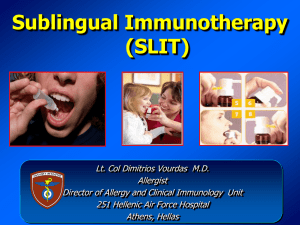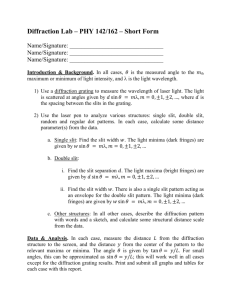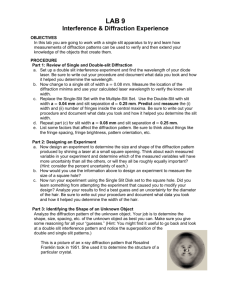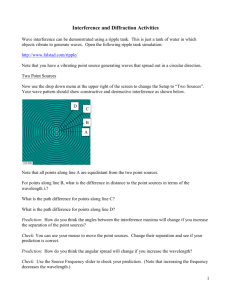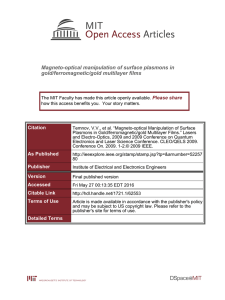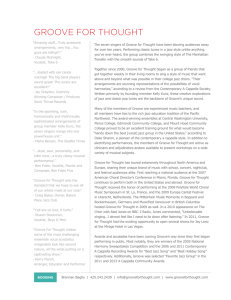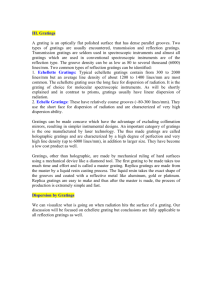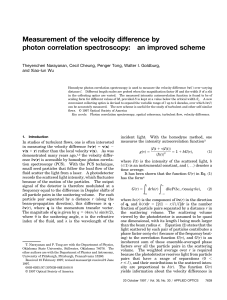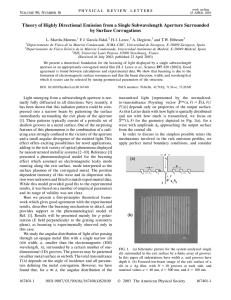Enhanced single-molecule spontaneous emission in an optimized
advertisement
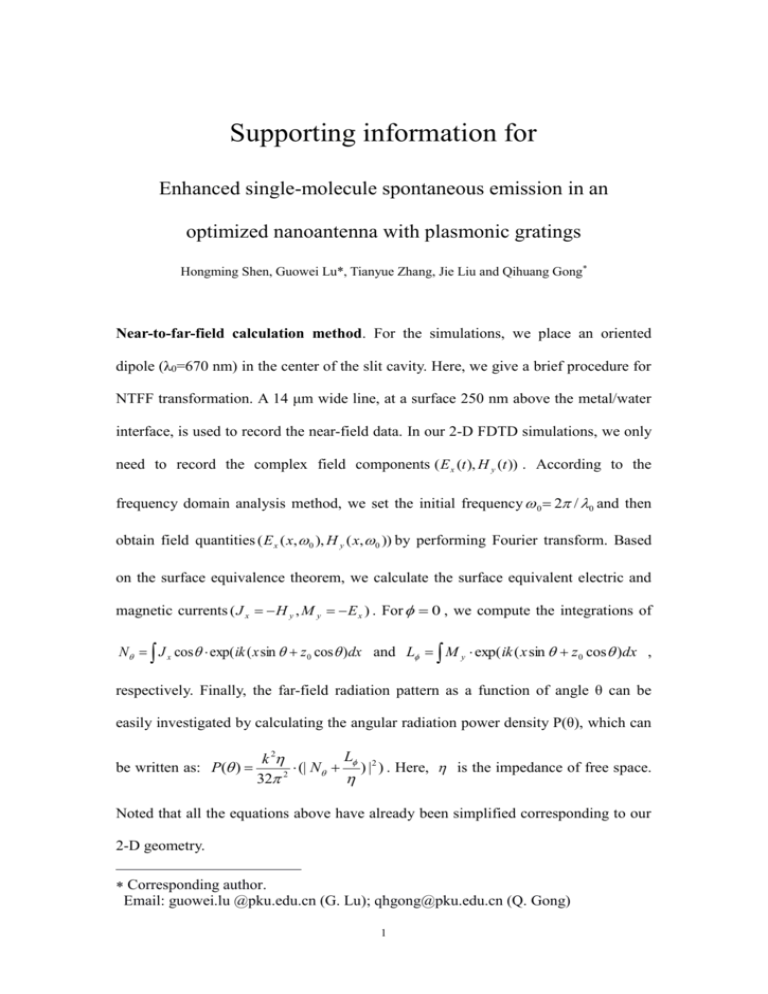
Supporting information for Enhanced single-molecule spontaneous emission in an optimized nanoantenna with plasmonic gratings Hongming Shen, Guowei Lu*, Tianyue Zhang, Jie Liu and Qihuang Gong* Near-to-far-field calculation method. For the simulations, we place an oriented dipole (λ0=670 nm) in the center of the slit cavity. Here, we give a brief procedure for NTFF transformation. A 14 μm wide line, at a surface 250 nm above the metal/water interface, is used to record the near-field data. In our 2-D FDTD simulations, we only need to record the complex field components ( E x (t ), H y (t )) . According to the frequency domain analysis method, we set the initial frequency 0 2 / 0 and then obtain field quantities ( E x ( x, 0 ), H y ( x, 0 )) by performing Fourier transform. Based on the surface equivalence theorem, we calculate the surface equivalent electric and magnetic currents ( J x H y , M y E x ) . For 0 , we compute the integrations of N J x cos exp( ik ( x sin z 0 cos )dx and L M y exp( ik ( x sin z 0 cos )dx , respectively. Finally, the far-field radiation pattern as a function of angle θ can be easily investigated by calculating the angular radiation power density P(θ), which can be written as: P( ) L k 2 (| N ) |2 ) . Here, is the impedance of free space. 2 32 Noted that all the equations above have already been simplified corresponding to our 2-D geometry. Corresponding author. Email: guowei.lu @pku.edu.cn (G. Lu); qhgong@pku.edu.cn (Q. Gong) 1 Supplementary figures Figure Captions Fig. 7 Influences of various geometric features on the far-field angular distribution of an oriented dipole (λ0=670 nm) placed in the center of the slit cavity. In all cases, N is fixed to be 6 and the mesh pitch is 2 nm. (a) Groove periodicity G: We increase G from 300 to 500 nm, setting H=270 nm, W=100 nm, d=40 nm and a=G/2. (c) Groove depth d: H=270 nm, W=100 nm, G=400 nm and a=G/2. Only certain groove structure (G, d) can produce a collimated beam normal to the metal surface for a fixed wavelength. Additionally, we are able to realize beaming or splitting light by tuning parameters of G and d. (b) Slit thickness H (W=100 nm, d=40 nm, G=400 nm and a=G/2) and (d) Slit width W (H=270 nm, d=30 nm, G=400 nm and a=G/2): Both of them do not affect on the far-field directivity, but affect the values of power density. (e) Groove width a: It is confirmed from our calculations that a close to half the period is appropriate (H=270 nm, W=50 nm, d=30 nm and G=400 nm). Fig. 8 Normalized (a) transmission and (b) absorption spectrums for a single slit without gratings (black dashed line) and with symmetric metal gratings (red solid line), respectively. A Gaussian-pulse line source illuminates from upside of the metal. In the case of a slit-grooves nanostructure, the resonant wavelength corresponding to the absorption maximum is about 650 nm with FWHM around 50 nm. As we can see, both the transmission and absorption enhancements of the slit-grooves nanostructure are much higher than the bare-slit nanostructure. 2 Fig.7 H. Shen 3 Fig.8 H. Shen 4


